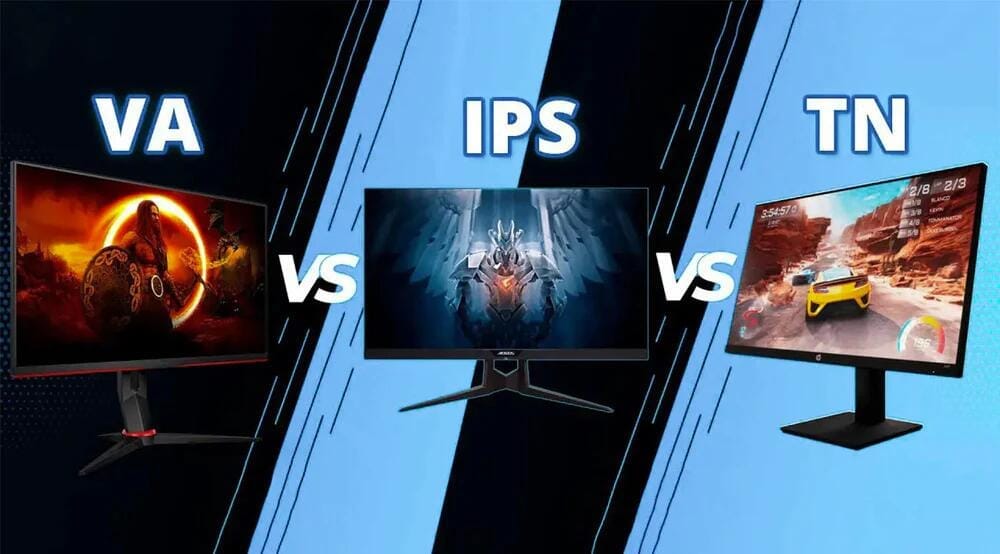
Camping offers a chance to unwind and reconnect with nature, but it doesn’t mean you have to leave all forms of entertainment behind. ONext portable TV can enhance your outdoor experience, whether you’re watching movies under the stars, following the latest sports events, or playing video games by the campfire. But, with a variety of LCD panel types—TN, IPS, and VA—choosing the best one for your portable TV for camping requires careful consideration. Each panel type has unique strengths and weaknesses, and your choice will depend on your specific needs.
In this article, we’ll explore the differences between these three popular panel technologies and recommend the best options for camping, especially when looking at ONext portable smart screens, a brand known for offering high-quality and rugged products suitable for outdoor use.
Understanding the Basics of TN, IPS, and VA Panels
Before we dive into the specific panel types, it’s important to understand that LCD (Liquid Crystal Display) technology forms the foundation of most modern screens, including portable TVs. However, the way the liquid crystals are arranged and manipulated varies between TN, IPS, and VA panels. This arrangement affects color reproduction, contrast, response time, and viewing angles, which are all critical factors in determining how well a portable TV will perform in different scenarios.

TN Panels: Speed Above All Else
What is a TN Panel?
TN (Twisted Nematic) panels are the oldest and most affordable type of LCD technology. They are best known for their super-fast response times and high refresh rates, making them popular in competitive gaming where every millisecond counts. However, for other uses like watching movies or general content consumption, TN panels can fall short due to limited color reproduction and narrow viewing angles.
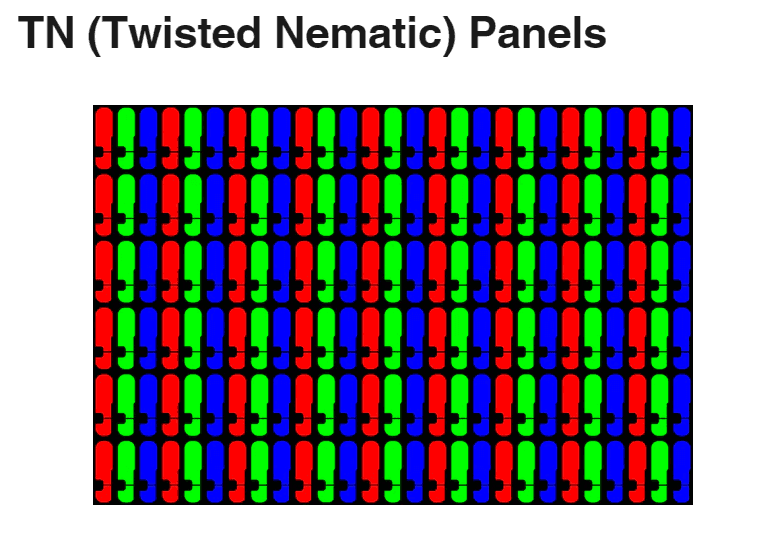
Key Benefits of TN Panels:
- Fast Response Times: TN panels offer some of the fastest response times, typically around 1ms. This makes them ideal for gaming, where a delay in screen refresh could impact your performance.
- High Refresh Rates: These panels can support refresh rates up to 240Hz or more, which is great for fast-paced content like gaming or action scenes in movies.
- Budget-Friendly: TN panels are often the most affordable option, making them attractive for those on a budget or for campers who don’t want to spend too much on a portable TV.
Downsides of TN Panels:
- Poor Color Accuracy: While TN panels have improved over the years, they still lag behind IPS and VA panels in terms of color reproduction. Colors may look washed out or less vibrant, which can be a drawback when watching movies in the rich hues of nature.
- Limited Viewing Angles: TN panels have the most limited viewing angles among the three. This means that if you’re sitting at an angle to the screen, the picture will appear distorted, with color shifting and loss of contrast.
- Not Ideal for Group Viewing: Given the limited viewing angles, TN panels are less suitable for situations where multiple people are watching from different positions, such as around a campfire or in a tent.
Why TN Panels Might Be a Good Choice for Camping
If you’re the type of camper who enjoys fast-paced games or action-packed movies, a Portable TV for Camping with a TN panel might be a viable option. TN panels provide quick response times, which means you’ll experience minimal lag when gaming, even outdoors. They’re also more budget-friendly, which is a consideration for anyone looking to buy a portable TV specifically for short camping trips.
However, the trade-offs are substantial. TN panels tend to perform poorly in outdoor environments due to their limited viewing angles and less accurate color reproduction. When camping, you might not always be sitting directly in front of the screen, and multiple viewers may struggle to see the display clearly from different angles.
Best for: Solo gamers who prioritize fast response times over color accuracy and viewing angles in their Portable TV for Camping.
IPS Panels: Best for Wide Viewing Angles and Color Accuracy
What is an IPS Panel?
IPS (In-Plane Switching) panels are known for their superior color accuracy and wide viewing angles, making them a favorite among professionals such as photographers, designers, and anyone who values color precision. For campers, these attributes make IPS panels an excellent choice for group entertainment, as everyone can see the screen clearly from almost any angle.
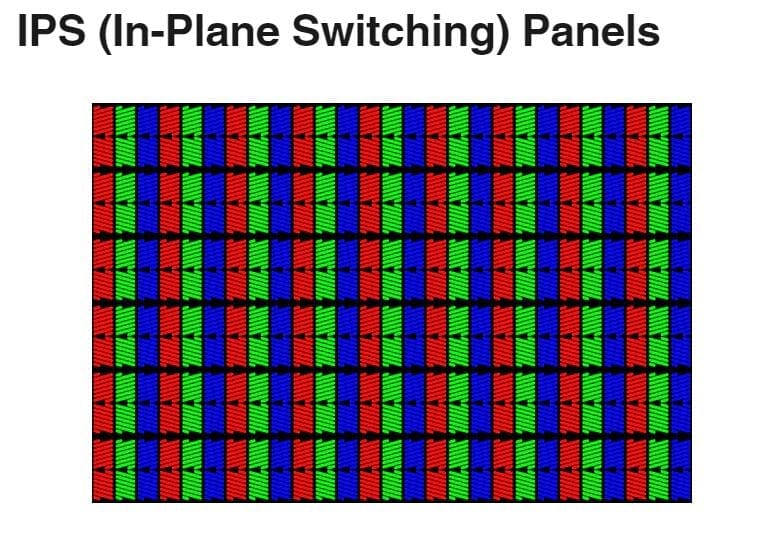
Key Benefits of IPS Panels:
- Excellent Viewing Angles: IPS panels offer up to 178-degree viewing angles, meaning the image remains clear and consistent even when viewed from the side. This is perfect for camping setups where people are gathered in different positions around the screen.
- Accurate Color Reproduction: IPS panels excel in producing rich, vibrant, and accurate colors. This makes them ideal for watching movies, TV shows, or nature documentaries where visual quality is essential.
- Good for Outdoor Lighting Conditions: With better color stability and brightness, IPS panels handle varying outdoor lighting conditions—such as shade, dusk, or even a partially sunny day—better than TN panels.
Downsides of IPS Panels:
- Slower Response Times: While IPS panels have improved in terms of response times, they are still generally slower than TN panels, with response times averaging between 4ms and 8ms. For casual gaming, this may not be noticeable, but for fast-paced action, you might experience slight motion blur or ghosting.
- Higher Power Consumption: IPS panels tend to consume more power than TN panels, which can be a concern if you’re relying on a battery-powered portable TV during extended camping trips.
- More Expensive: IPS panels are usually more expensive due to their superior image quality, which might make them less attractive if you’re on a strict budget.
Advantages of IPS Panels for Camping
For a Portable TV for Camping, an IPS panel might be the best all-around option. These panels excel at delivering rich, vibrant colors, making your outdoor movie nights much more enjoyable. The viewing angles are excellent, up to 178 degrees, ensuring that no matter where you sit, you’ll get a consistent and clear picture.
Another advantage is the adaptability to outdoor lighting conditions. Whether you’re watching in broad daylight or during a cozy evening under the stars, an IPS-equipped Portable TV for Camping maintains good color balance and visibility. However, there are some downsides. IPS panels tend to be more power-hungry, which might affect battery life during extended camping trips. They’re also generally more expensive than TN or VA panels.
Best for: Families or groups who prioritize wide viewing angles and excellent color reproduction in their Portable TV for Camping.
VA Panels: Best for Deep Contrast and Versatility
What is a VA Panel?
VA (Vertical Alignment) panels offer the best contrast ratios of the three technologies, producing deeper blacks and brighter whites. This makes them a solid choice for watching movies or content with a lot of dark scenes, such as thrillers or nighttime nature documentaries. VA panels also strike a balance between the speed of TN panels and the color quality of IPS panels, making them a versatile option for portable TVs used during camping.
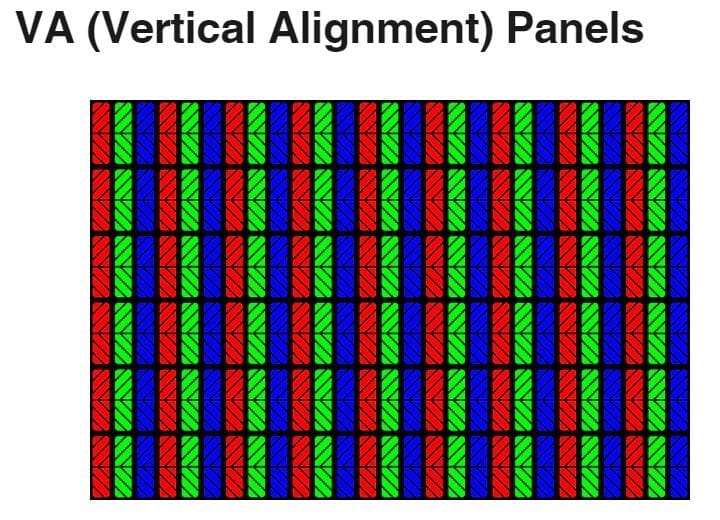
Key Benefits of VA Panels:
- Superior Contrast Ratios: VA panels can achieve contrast ratios as high as 3000:1 or more, far surpassing TN and IPS panels. This makes them great for watching movies in low-light environments, such as night-time around a campfire or inside a tent.
- Good Color Accuracy: While not as accurate as IPS panels, VA panels still offer better color reproduction than TN panels. This makes them a good middle-ground for campers who want decent color quality without the premium price tag of IPS.
- Moderate Response Times: VA panels have better response times than IPS panels, though not as fast as TN panels. For most casual users, the response times of VA panels (typically around 4-6ms) are more than sufficient for watching movies or playing casual games.
Downsides of VA Panels:
- Slower Response Times than TN: While VA panels offer better response times than IPS, they are still not as fast as TN panels, which might result in some motion blur during fast-paced content.
- Moderate Viewing Angles: VA panels offer better viewing angles than TN panels, but they still can’t match the ultra-wide angles of IPS panels. This means you may notice some color shift when viewing the screen from extreme angles, although it won’t be as pronounced as with TN panels.
Why VA Panels Work for Camping
One of the standout features of VA panels is their superior contrast ratios, with deep blacks and bright whites that can enhance your viewing experience. When you’re watching a movie in a dark environment, such as inside a tent or by a campfire, the deeper contrast provided by a VA panel on your Portable TV for Camping will make the visuals pop more than with other panel types.
Although VA panels offer better color accuracy than TN panels, they don’t quite match the vividness of IPS panels. Additionally, the viewing angles on VA panels, while better than TN, still aren’t as wide as those on IPS panels. Another potential downside is the response time, which tends to be slower than TN panels. This could result in slight motion blur, which may be noticeable in fast-moving scenes.
Best for: Movie lovers who want deep contrast and good overall image quality for their Portable TV for Camping.
Key Features to Consider When Choosing a Portable TV for Camping
In addition to the type of panel you select, there are other important features to consider when buying a Portable TV for Camping. These factors can significantly affect the overall usability and enjoyment of your portable TV in the outdoors.
1. Battery Life
Battery life is crucial for a Portable TV for Camping because you won’t always have easy access to power sources. Make sure to select a model that offers long battery life, ideally between 3 to 5 hours. Some portable TVs, such as those offered by ONext, come with built-in rechargeable batteries that can sustain hours of entertainment.
2. Portability and Durability
Camping can be rough on electronics, so choosing a Portable TV for Camping with a rugged design is essential. ONext offers models that are lightweight yet durable, featuring sturdy casing and shock-resistant edges to protect the TV from potential damage. Look for portable TVs that are easy to carry and set up, as you’ll want to minimize hassle during your trip.
3. Connectivity Options
Ensure your Portable TV for Camping has versatile connectivity options such as HDMI, USB, and Bluetooth. This allows you to connect your streaming devices, portable speakers, or external hard drives to enjoy a wide variety of content. ONext portable TVs come equipped with these essential ports and even offer built-in Wi-Fi for streaming content on the go.
4. Brightness and Outdoor Visibility
One of the biggest challenges of using a Portable TV for Camping is visibility in bright outdoor conditions. Look for a model with a brightness level of at least 300 nits to ensure the screen remains visible in daylight. Both IPS and VA panels generally perform better than TN panels in terms of brightness, making them better suited for outdoor use.
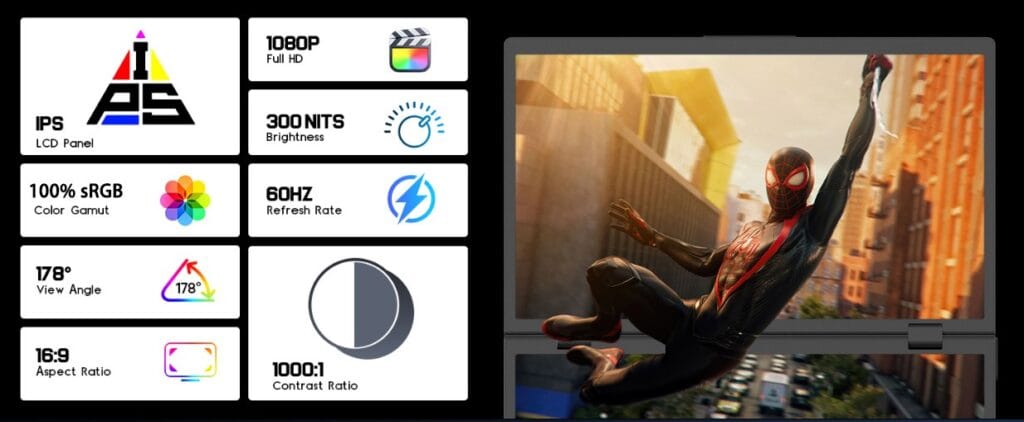
ONext Portable Smart Screens: The Best Choice for Camping
When it comes to choosing a Portable TV for Camping, ONext offers a range of high-quality portable smart screens designed for the outdoor enthusiast. Whether you’re looking for IPS or VA panels, ONext has options that are perfectly suited for camping environments.
Key Features of ONext Portable Smart Screens:
- Durable and Portable Design: Built to withstand the elements, ONext portable TVs feature a rugged design that’s lightweight and easy to transport.
- Long Battery Life: ONext models typically offer 4 to 5 hours of battery life, ensuring that your Portable TV for Camping lasts through an entire evening of entertainment.
- Excellent Viewing Options: Whether you choose an IPS or VA panel, ONext screens provide wide viewing angles, vibrant colors, and deep contrasts, enhancing your outdoor viewing experience.
- Multiple Connectivity Options: ONext smart screens come with a variety of connectivity options, including HDMI, USB, and built-in Wi-Fi, allowing you to stream or connect other devices with ease.
One standout model is the ONext Outdoor 15, a 15-inch Portable TV for Camping that features an IPS panel, long battery life, and compact design, making it an ideal choice for outdoor use.
Conclusion: Which Panel Type is Best for Your Portable TV for Camping?
When choosing a Portable TV for Camping, consider how you’ll use it and what panel type best suits your needs:
- TN Panels: Ideal for gamers who need fast response times and are less concerned with color accuracy and viewing angles.
- IPS Panels: Best for group viewing, offering wide viewing angles and accurate colors, making it perfect for shared camping experiences.
- VA Panels: Great for movie lovers who value deep contrast and an immersive viewing experience, especially in low-light settings.
No matter which panel you choose, ONext offers some of the best Portable TV for Camping options, designed to withstand the outdoors and deliver top-tier performance for all your entertainment needs.
Recommended product
-
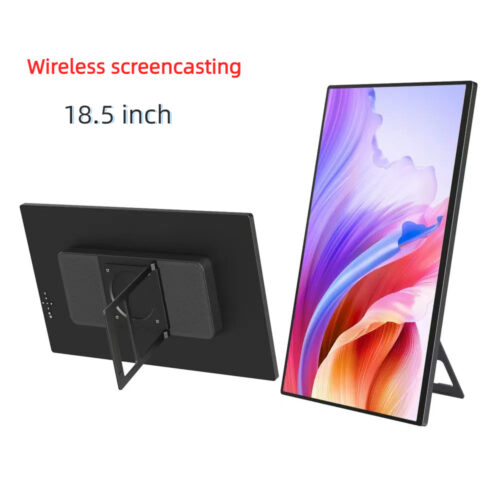 ONext 18.5 inch Portable Laptop Monitor ,Wireless screencasting Laptop Monitors with Kickstand
ONext 18.5 inch Portable Laptop Monitor ,Wireless screencasting Laptop Monitors with Kickstand -
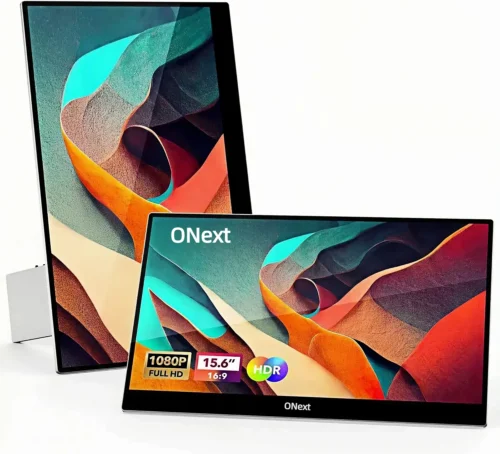 ONext Portable Monitor for Laptop, Slim 15.6 Inch External Monitor with Adjustable kickStand
ONext Portable Monitor for Laptop, Slim 15.6 Inch External Monitor with Adjustable kickStand -
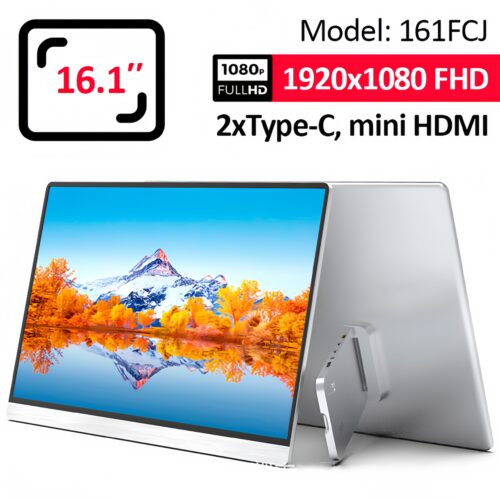 Portable Laptop Screen 16.1 inch Laptop Monitors Full HD, IPS, USB Type-C, Flicker Free, Blue Light Filter Silver With Foldable Stand
Portable Laptop Screen 16.1 inch Laptop Monitors Full HD, IPS, USB Type-C, Flicker Free, Blue Light Filter Silver With Foldable Stand -
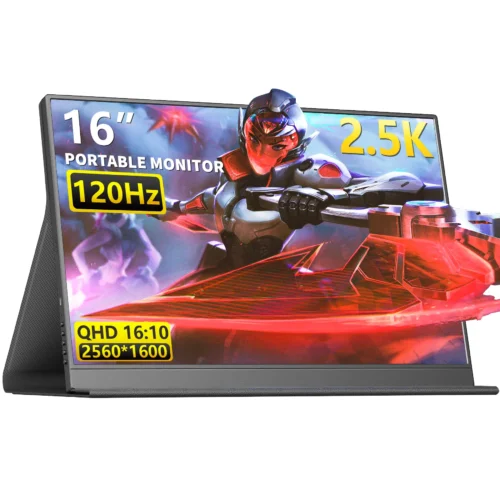 16 Inch Portable Monitor 2560*1600 FullHD 120Hz Gaming Computer Monitor Wide 16:9 Travel Monitors for Laptop Mac Phone Tablet PS4 Switch Xbox Built In Speakers,HDMI/Type-C Monitor
16 Inch Portable Monitor 2560*1600 FullHD 120Hz Gaming Computer Monitor Wide 16:9 Travel Monitors for Laptop Mac Phone Tablet PS4 Switch Xbox Built In Speakers,HDMI/Type-C Monitor -
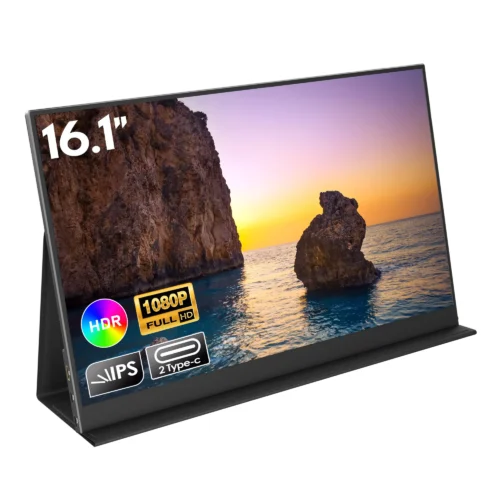 16.1inch 1080P FHD Laptop Monitor USB-C HDMI External Computer Display HDR IPS Gaming Monitor Smart Cover & Speaker, 2nd Screen for Laptop PC Mac Phone Xbox PS3-5 Switch
16.1inch 1080P FHD Laptop Monitor USB-C HDMI External Computer Display HDR IPS Gaming Monitor Smart Cover & Speaker, 2nd Screen for Laptop PC Mac Phone Xbox PS3-5 Switch -
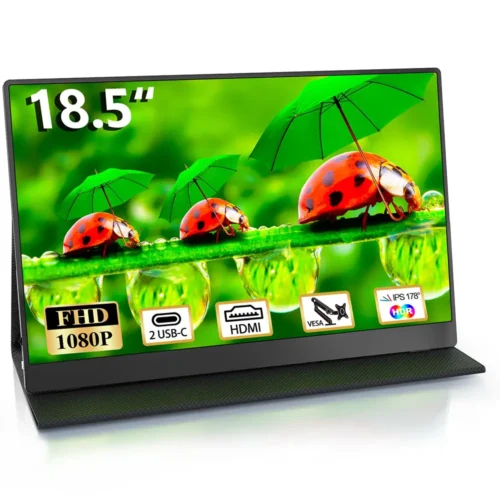 Portable Large Monitor-18.5 Inch Computer Gaming Display 60Hz 100% sRGB FHD 1080P USB-C HDMI IPS Screen for Laptop
Portable Large Monitor-18.5 Inch Computer Gaming Display 60Hz 100% sRGB FHD 1080P USB-C HDMI IPS Screen for Laptop